How COVID-19 Compares to the Spanish Flu
As we’re now faced with our very own contagion in 2020, there’s a lot we can learn by looking at the past.
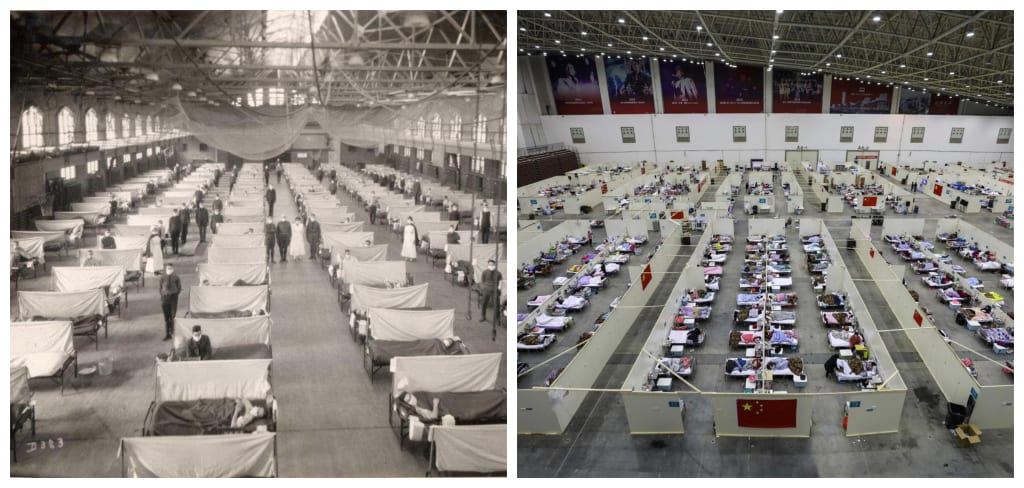
It’s eerie to think about how just over 100 years ago, the world was in the midst of a different global pandemic. The Spanish flu took the lives of 20 to 50 million people, making it one of the worst viral outbreaks in human history. To put it into perspective, the Spanish flu killed around five percent of the planet’s entire population and wiped out more people than WWI. As we’re now faced with our very own contagion in 2020, there’s a lot we can learn by looking at the past.
The Spanish Flu
The Spanish flu occurred between January 1918 to December 1920, infecting 500 million people from numerous countries around the world. The origins of this specific strain of H1N1 influenza remain widely unknown, although there are suspected beginnings. These range from an animal farm in the American Midwest to Chinese labourers. Many cite a military camp in Kansas as the epicentre that helped spread the virus through the United States and Europe. Regardless of how this devastating virus began, WWI and troops travelling to Europe definitely played a huge role.
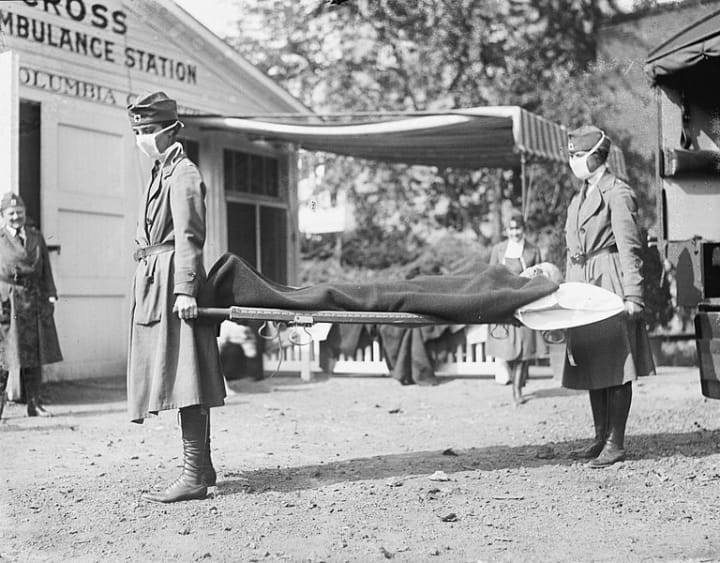
Despite a discrepancy over where the virus actually began, the Spanish flu did not originate in Spain. During WWI, several countries had wartime news censorship rules in place. Since Spain was a neutral power, they were not subjected to these restrictions like the vast majority of other European countries. Spain was one of the very first countries to report the flu, which is why many believe it started there. Thus, the name "Spanish flu" was born.
At the time, there were no proper vaccines or drugs to use as treatments, meaning other measures had to be put in place to stop the spread of this deadly virus. Citizens were ordered to wear masks, non-essential businesses were forced to close, and a new normal was underway.
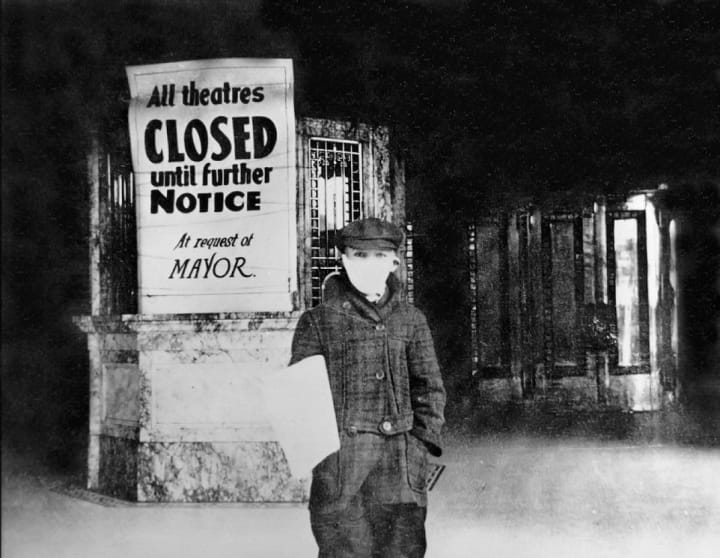
The symptoms of the Spanish flu were a high fever, chills, and some fatigue. During the first wave, the number of deaths remained low as many recovered after a handful of days. At that point, the flu was only fatal to the very young and old. The second wave saw a huge spike in cases, as relatively healthy people between the ages of 25- to 35-years-old were now suffering.
It also wasn’t until the deadly second wave in the fall of 1918 that victims were dying within hours of developing symptoms. Most of the time, their skin would turn blue, and their lungs would fill with fluid, causing them to suffocate. The mass movement of American troops to Europe during WWI was the main argument as to why the second wave occurred. At its peak, the Spanish flu was killing hundreds of thousands of people each day.
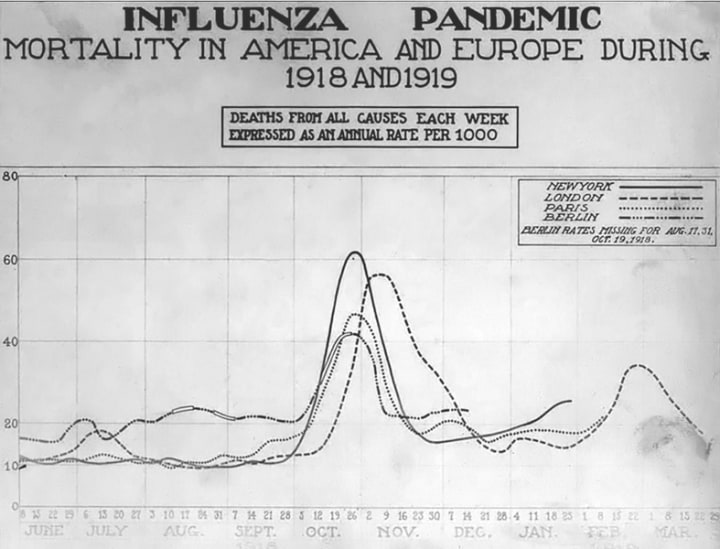
The lack of civilian quarantines allowed the flu to spread in communities, as public health officials were wary of supporting such drastic measures during wartime. A shortage of nurses and doctors assisting in the First World War was also detrimental in how certain countries were able to cope with the virus.
The Spanish flu was devastating to the entire world. The overcrowded cities, unhygienic wartime hospitals, and widespread global travel are the prime reasons why the virus was able to mutate and spread to even the most remote areas around the world.
COVID-19
Unlike the Spanish flu, we know where COVID-19 started. The outbreak was first identified in December 2019, at the Huanan Seafood Wholesale Market in Wuhan, China. It was reported that several people in the area were being treated for pneumonia, and China officially informed the World Health Organization (WHO) on December 31, 2019.
Experts have noted that this specific coronavirus originated in a bat and hopped to another animal before making its way to humans. Most wet markets in China sell live animals, some of a unique nature. These can include bats, pangolins, snakes, civets and other creatures you may not usually find at your local market. Although not all of these wet markets sell live animals, the term is meant to signify a place where live animals slaughtered by vendors once they’ve been purchased.

COVID-19 has similar symptoms to the Spanish flu. Where this virus deviates slightly is how different each individual’s cases are. Some report fevers, others report a loss of smell or taste. What’s worse is that there are asymptomatic people who may have contracted the virus and spread it without knowing. This virus is always changing, which could mean the worst is yet to come.
After two months of complete lockdown, Wuhan, the epicentre of COVID-19 finally reopened its doors. Despite the city easing restrictions, things look a lot different. There are various preventative efforts in place, almost everyone still wears a mask, and temperatures are checked before entering stores and restaurants. These are just some of the limitations we may have to live with over the next few years while we wait for a vaccine.
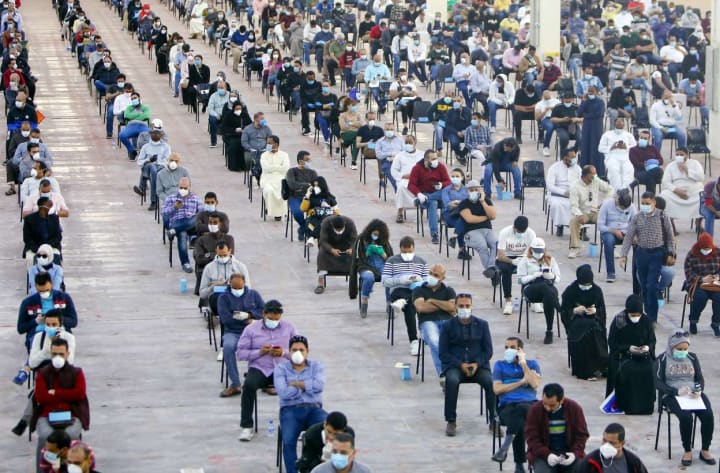
As of April 24, over 2.6 million people have been infected with the coronavirus, with over 180,000 deaths worldwide. Even though COVID-19’s numbers are nowhere near the sheer volume to that of the Spanish flu, it doesn’t mean they can’t eventually get there. A handful of countries are only now recovering from their first wave of the virus. As previously mentioned, it's important to keep in mind that the Spanish flu had three waves, the second being the deadliest by far.
With proper social distancing, frequently washing our hands, and restrictions on essential services, we too can overcome this global pandemic safely. Health officials' biggest downfall during the Spanish flu was the inability to quarantine millions of people because of WWI.
In 2020, we can stop the spread. Technology has made it easier than ever for industries to shift to working at home. Limiting the amount of time you leave the house could save your life. Even if you’re not feeling sick, it doesn’t mean you can’t pass on the virus to someone else. Ultimately, only time will tell if we can stop the spread with the safety precautions already in place.
About the Creator
Shandi Pace
History lover, music nerd and sports fanatic. | Instagram & Twitter: @shandipace, YouTube: https://www.youtube.com/shandipace






Comments (1)
That was really informative. Thanks:)